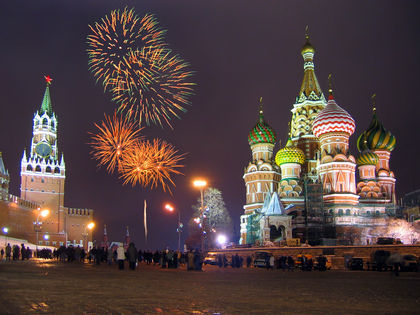Russia - Future trends

The Russian economy faces serious challenges. Russian industry is not likely to regain an important role in a global economy that demands peak efficiency. Consequently, the export of primary commodities and raw materials is likely to remain the bulwark of economic development. Primary commodity markets are relatively more susceptible to fluctuations than are industrial markets. Russia is likely to continue to be influenced by economic trends that it cannot control. International investors, including the major investment banks, commercial investors, and companies interested in expanding their businesses in world markets have remained on the sidelines, scared off by Russia's long-standing problems with capital flight, reliance on barter transactions, corruption of government officials, and fears of organized crime.
The Russian government and leading economists in the country have developed a consensus on the need for various kinds of administrative changes. Failures such as corruption are not moral failures, but a failure of administrative structure. There is a consensus that the country needs to strengthen the institutional and legal underpinnings of a market economy. Improving the legal and regulatory structure would provide a reliable framework for improving governance, strengthening the rule of law, reducing corruption, and attracting the long-term capital needed for deep restructuring and sustained growth. The country also needs to improve its tax system to encourage greater tax compliance and a realistic appreciation in the population that the people must pay for the costs of a modern society. The government must avoid pressures to use central bank money to finance its budget deficit. Further reforms are needed in the banking sector, including a legal framework to make it easier to close down troubled banks.
Any measures aiming to reduce poverty levels among workers are primarily associated with the increase in the official wages drawn by the lower paid workers, the majority of which are women, and also with the identification and taxation of income in Russia's informal sector.
A positive sign was that in mid-year 2000, the Russian government adopted an official development strategy for the period 2000-10. The strategy identified economic policy directed at ensuring equal conditions of market competition, protecting ownership rights, eliminating administrative barriers to entrepreneurship, making the economy more open, and carrying out tax reform. The strategy identified the creation of an effective state performing the function of a guarantor of external and internal security and also of social, political, and economic stability. The strategy spoke of a "new social contract" between the more active sections of Russian society and the reformed government.
Russia's economy remains very vulnerable to external shocks and has not yet been able to develop a stable base for continued growth and poverty reduction. While the data are not yet sufficient to carefully assess the impact of the economic recovery on the enterprise sector, it appears that the rebound in the non-oil/gas traded goods sector has so far been driven by the real depreciation of the ruble and the greater availability of capital. Furthermore, there are indications that industrial growth is beginning to slow. Therefore, maintaining a realistic exchange rate, while controlling inflation, must remain a policy priority for sustaining the recovery and future growth of the real economy. Strong fiscal discipline needs to be maintained. A large swing factor is, of course, the level of capital flight, the reduction of which depends on progressive improvement in the investment climate in Russia. Finally, over the longer-term, Russia's deteriorating infrastructure is a matter of concern. Russia's basic public infrastructure—including roads, bridges, railways, ports, housing, and public facilities such as schools and hospitals—was built during the Soviet period. After independence, investment in maintenance and new construction of public infrastructure has fallen dramatically. Russia's aging physical plant is likely to become an increasing constraint to growth unless an improved investment climate can ensure substantially higher levels of investments than is presently the case.
Comment about this article, ask questions, or add new information about this topic: